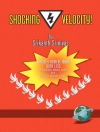‘Each chapter contains recommendations for legislators, policy makers, researchers, and families. This book should be on the desk, and minds, of legislators, attorneys, social workers and other mental health professionals who encounter and wish to ameliorate the effects of violence in the lives of their young constituents, clients, and patients.’
—JOURNAL OF CHILD AND FAMILY STUDIES
Questions relating to violence and children surround us in the media: should V-chips be placed in every television set? How can we prevent another Columbine school shooting from occurring? How should pornography on the internet be regulated? The Handbook of Children, Culture and Violence addresses these questions and more, providing a comprehensive, interdisciplinary examination of childhood violence that considers children as both consumers and perpetrators of violence, as well as victims of it.
The Handbook offers much-needed empirical evidence that will help inform debate about these important policy decisions. Moreover, it is the first single volume to consider situations when children are responsible for violence, rather than focusing exclusively on occasions when they are victimized. Providing the first comprehensive overview of current research in the field, the editors have brought together the work of a group of prominent scholars whose work is united by a common concern for the impact of violence on the lives of children.
The Handbook of Children, Culture and Violence is poised to become the ultimate resource and reference work on children and violence for researchers, teachers, and students of psychology, human development and family studies, law, communications, education, sociology, and political science/ public policy. It will also appeal to policymakers, media professionals, and special interest groups concerned with reducing violence in children′s lives. Law firms specializing in family law, as well as think tanks, will also be interested in the Handbook.
قائمة المحتويات
Introduction – Nancy E. Dowd
Prologue: Developmental Variations Among Children and Adolescents: An Overview of the Research and Policy Implications – Dorothy G. Singer
Part I. Children as Victims
1. Child Witnessing of Domestic Violence – Naomi Cahn
2. Domestic Violence and Child Protection: Confronting the Dilemmas in Moving From Family Court to Dependency Court – Thomas D. Lyon and Mindy B. Mechanic
3. Sexually Predatory Parents and the Children in Their Care: Remove the Threat, Not the Child – Robin Fretwell Wilson
4. Exposure to Pornography as a Cause of Child Sexual Victimization – Diana E.H. Russell and Natalie Purcell
5. Statutory Rape: An Empirical Examination of Claims of “Overreaction” – Ross E. Cheit and Laura Braslow
6. Mitigating the Impact of Publicity on Child Crime Victims and Witnesses – Charles Putnam and David Finkelhor
Part II. Children as Consumers of Violence
7. The Violent Shadows of Children’s Culture – John Cech
8. A Preliminary Demography of Television Violence – Nancy Signorielli
9. Protecting Children’s Welfare in an Anxiety-Provoking Media Environment – Joanne Cantor
10. The Impact of Violent Music on Youth – Barbara J. Wilson and Nicole Martins
11. How Real Is the Problem of TV Violence? Research and Policy Perspectives – Dale Kunkel and Lara Zwarun
12. Violent Video Games: Effects on Youth and Public Policy Implications – Douglas A. Gentile and Craig A. Anderson
13. Positive Features of Video Games – Laurie N. Taylor
14. Children, Adolescents, and the Culture of Online Hate – Brendesha Tynes
15. Constitutional Obstacles to Regulating Violence in the Media – Catherine J. Ross
Part III. Children as Perpetrators of Violence
16. Peer Victimization: The Nature and Prevalence of Bullying Among Children and Youth – Susan P. Limber
17. Bullying and Violence in American Schools – Ellen de Lara
18. Judging Juvenile Responsibility: A Social Ecological Perspective – Mark R. Fondacaro and Lauren G. Fasig
19. Adult Punishment for Juvenile Offenders: Does It Reduce Crime? – Richard E. Redding
20. Psychopathy Assessment and Juvenile Justice Mental Health Evaluations – Matthew Owen Howard, Michael K. Dayton, Kirk A. Foster, Michael G. Vaughn and John L. Zelner
21. Cleaning Up Toxic Violence: An Eco Generist Paradigm – Barbara Bennett Woodhouse
عن المؤلف
Robin Fretwell Wilson is Associate Professor of Law at the University of Maryland School of Law. She has published articles on the risks of abuse to children in the Cornell Law Review, Emery Law Journal, Journal of Child and Family Studies, Washington University Journal of Law & Policy, and Child and Family Law Quarterly. She has testified on the use of social science research in legal decision-making before the Federal Trade Commission and Department of Justice Joint Hearings on Health Care. A member of the Executive Committee of the Family and Juvenile Law Section of the Association of American Law Schools, Professor Wilson has frequently lectured on violence against children, including presentations at the Family Law Project hosted by Harvard University Law School, the National Society for the Prevention of Cruelty to Children in London, the Tenth World conference of the International Society of Family Law in Brisbane, Australia, the Third International Conference on Child and Adolescent Mental Health in Brisbane, the 2004 Helping Families Change conference in Auckland, New Zealand, and the Ninth Regional European Conference of the International Society for the Prevention of Child Abuse and Neglect in Warsaw, Poland.












